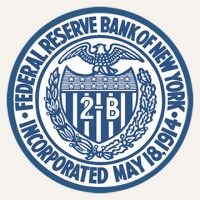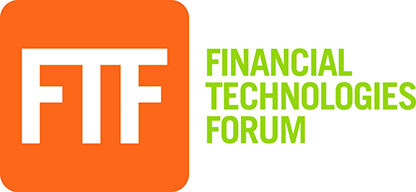The New York Fed and BIS have been experimenting with tokenization and smart contracts.
As U.S. regulators explore new guardrails for digital assets, the Federal Reserve Bank of New York and the Bank for International Settlements (BIS) based in Basel, Switzerland, have been experimenting with tokenization.
The New York Fed and BIS have completed an initial exploration of how central banks could run monetary policy operations in a world where tokenization plays a major role in payments and securities settlement. The joint research effort is detailed in a new report, “Project Pine: Central bank open market operations with smart contracts.”

Grygo is the chief content officer for FTF & FTF News.
The new report explains that tokenization “involves using technology such as DLT [distributed ledger technology] to create ‘digital tokens’ representing legal claims like money and securities … These tokens can be programmed with ‘smart contracts’ — programs that execute when pre-specified conditions are met. Tokenization can create more distributed systems wherein the roles and responsibilities of infrastructure operators can be shared, potentially allowing novel arrangements. These designs can be combined with possible efficiency gains from smart contracts to improve post-trade processes for securities (for example, asset servicing, custody, or collateral management).”
Researchers from the New York Innovation Center at the New York Fed and the Swiss Centre of the BIS Innovation Hub discovered “that central banks could customize and deploy policy implementation tools using programmable smart contracts in a potential future state where commercial banks and other private sector financial institutions have widely adopted tokenization for wholesale payments and securities settlement,” according to the report from the duo.
The effort yielded a toolkit prototype.
“The project generated the prototype of a generic monetary policy implementation tokenized toolkit for potential further research and development by central banks across jurisdictions and currencies. The prototype was designed to be technically modifiable for different central banks’ monetary policy frameworks and calibrated to conduct standard or emergency market operations,” according to officials.
The project team’s toolkit prototype uses smart contracts. “The prototype has the capability to pay interest on reserves and create facilities that temporarily exchange reserves for collateral (and vice versa), swap assets, and execute asset purchases and sales,” according to Fed and BIS officials. “It was tested using hypothetical scenarios based on past market events (like interest rate tightening and easing cycles, quantitative easing and tightening cycles, and periods of strained market liquidity or broader disruptions in markets).”
New York Fed and BIS officals were assisted by contributors at the Reserve Bank of Australia (RBA), the Bank of Canada (BoC), the Bank of England (BoE), the European Central Bank (ECB), the Bank of Mexico (BoM), the Swiss National Bank (SNB), and the Board of Governors of the Federal Reserve System (FRB). The contributors “attended workshops in 2023 and 2024 to set requirements and evaluate the project,” according to the report.
The advisors “helped outline the project scope and specific design requirements. [The toolkit] is not particular to any currency or jurisdiction. It can fulfil a common set of central bank implementation requirements, including paying interest on reserves, open market operations, and collateral management,” officials add.
“The project demonstrated that central banks could use this new technology to carry out their existing roles if tokenization is widely adopted. If payments and securities are tokenized, the benefit to central banks would differ based on circumstances and existing operations. Yet Project Pine found that central banks could use smart contracts to easily and quickly create new facilities or adjust existing ones to optimize the implementation of monetary policy in a tokenized environment,” officials add.
The prototype also “showed that central banks will likely play a very different role than other participants in tokenized systems. As well as deploying smart contracts, central banks may also require privileged access to data and higher standards of privacy and security,” according to the report. “Outlining requirements for a jurisdiction is a task that each central bank will perform alone.”
However, despite the promising results of the first test, the next steps are not straightforward.
“Project Pine’s findings highlighted areas for further research and analysis related to interoperability and data standardization,” officials say. “Project Pine’s results offer central banks a starting point for better understanding the opportunities, risks, and requirements of adopting tokenization in their respective jurisdictions. Technical experimentation is still at an early stage, and there are more areas for future research and collaboration.”
 Project Pine and its supporters intend “to contribute to a broad and transparent public dialogue regarding potential applications of new technologies in the financial sector,” officials say. “BIS Innovation Hub projects are experimental in nature and aim to explore and deliver public goods to the global central banking community. Project Pine was limited to research and experimentation and should not be interpreted to reflect any policies, directives, or views of the Federal Reserve Bank of New York or the Federal Reserve System.”
Project Pine and its supporters intend “to contribute to a broad and transparent public dialogue regarding potential applications of new technologies in the financial sector,” officials say. “BIS Innovation Hub projects are experimental in nature and aim to explore and deliver public goods to the global central banking community. Project Pine was limited to research and experimentation and should not be interpreted to reflect any policies, directives, or views of the Federal Reserve Bank of New York or the Federal Reserve System.”
Let’s hope that the right organization can take these initial results further, as tokenization and digital assets are on their way.
Here is a link to a video overview of Project Pine: https://youtu.be/BEgn23HadTY
More about the project can be found here: https://shorturl.at/Onymz, and the report is here: https://www.bis.org/publ/othp95.pdf
Need a Reprint?